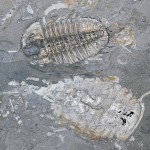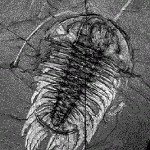One big animal family
A new study takes a close look at you and your dog’s ancient relative

In your family, it’s easy to figure out whom you’re related to. Siblings share parents. Cousins share grandparents and great-grandparents and so on. Go back far enough in time and you’ll discover that you share ancestors with every person on Earth. Continue back even further and you’ll find an even broader connection. All animals trace to a common ancestor. And that means that you, your dog and your fish are related.
In a new study, scientists report genetic clues indicating that the most recent common ancestor of all animals came along about 800 million years ago.
If you went back in time and searched for this creature, it wouldn’t look anything like you, your dog or a fish. We don’t know what it looked like. But that species evolved, or changed over a long period of time, eventually producing all the animals that ever lived on Earth.
Several hundred million years after this ancestor appeared, other types of creatures were crawling and swimming in the seas. Scientists know about some of those critters by studying fossils. Those are the remains of organisms preserved in ancient rocks. The fossil record tells the story of early life on Earth. Beginning about 541 million years ago, a wild variety of animal types appeared in the record in a burst of evolutionary activity. Scientists refer to this surge in different types of creatures as the Cambrian explosion.
Finding fossil signs of the ancestors that came before the explosion has proven difficult. Researchers have puzzled over this gap in the record for more than a century. Even Charles Darwin, the naturalist who proposed that animals evolved from common ancestors, was troubled by the explosion’s fossils. He thought that if scientists could find older rocks with better-preserved fossils, they might find even older ancestors. These signs could provide clues to how animals of the Cambrian explosion evolved.
“There’s a deeper history that’s been missing from the fossil record,” Kevin Peterson told Science News. Peterson worked on the study. As a paleobiologist, he studies ancient species at Dartmouth College.

Many changes had to happen between the time of the last common ancestor and the Cambrian explosion. Scientists can now find signs of those changes in the genetic material inside cells. In their new study, Peterson and his colleagues say that in the tens of millions of years before the Cambrian explosion, genetic changes were already guiding different animal ancestors toward major evolutionary changes. “We show that animals evolved quite a bit before they show up in the fossil record,” Peterson said.
The team of researchers who worked on the new study used tools and approaches from different areas of science. Some calculated the ages of ancient fossils. Others studied living animals’ DNA. That’s a long, spiral-shaped molecule that carries genetic information inside nearly every cell. By combining genetic information and data from fossil studies, the scientists were able to connect genetic changes to specific time periods. The team found that ancient animals were evolving long before their new forms were preserved as fossils during the Cambrian explosion.
Some scientists argue that the new study doesn’t provide much that’s new. Others think the study can help scientists better understand the tree of life. University of California, Berkeley biologist James Valentine told Science News that the new study “stands back and tries to make sense of the whole picture.”
POWER WORDS (adapted from the New Oxford American Dictionary)
species A group of organisms with similar individuals capable of exchanging genes or interbreeding.
evolution The process of change in living things through inheriting genetic information from ancestors, often over a long period of time.
Cambrian A period of Earth’s history that lasted from about 541 million to 510 million years ago. It is one of the earliest periods in which fossils can be used to date rocks.
fossil The remains or impression of a prehistoric organism preserved in rock.







